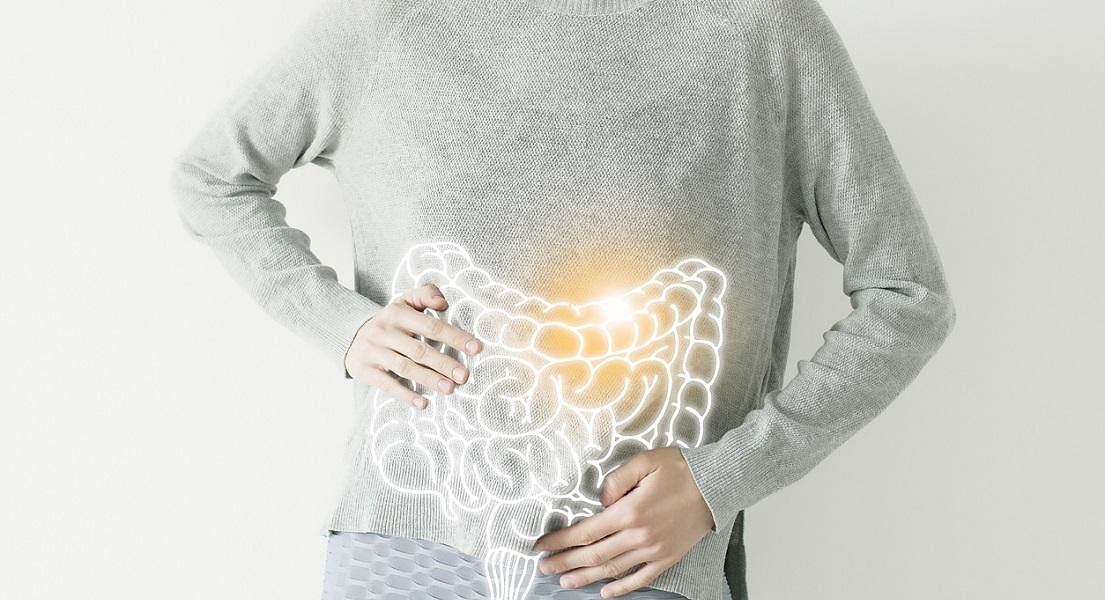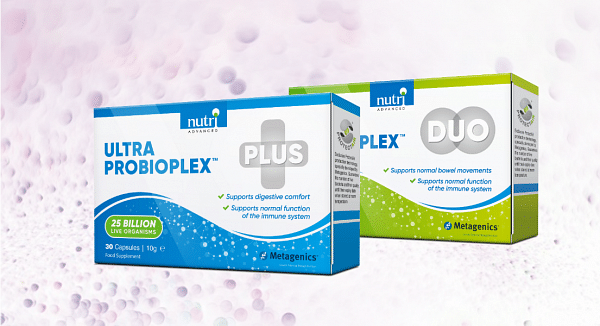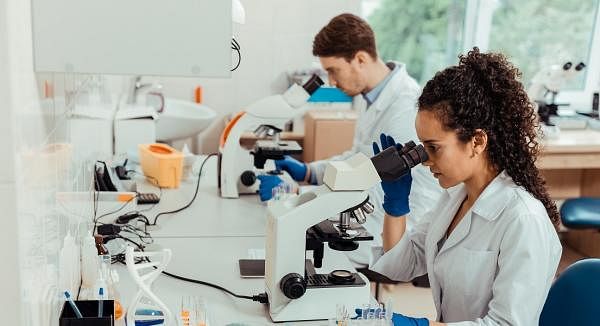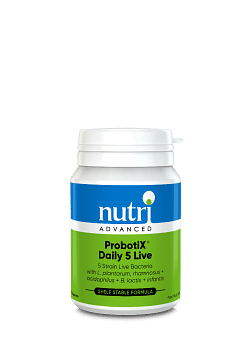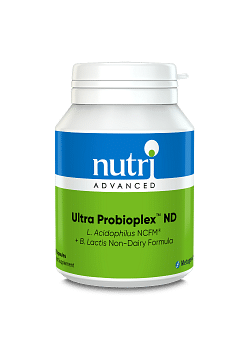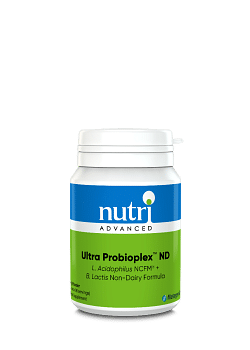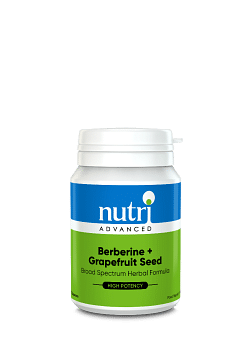Nurture Your Gut Health to Support Oestrogen Balance
Why you can trust Nutri Advanced Every article on our site is researched thoroughly by our team of highly qualified nutritionists. Find out more about our editorial process.
‘Good health starts in the gut’ is a phrase that gets repeated often, and rightly so. As healthcare practitioners, we all understand how crucial it is to consider gut health for every client, whether they’re presenting with GI symptoms or not. This is because gut health interacts with just about every other aspect of health, and in lots of different ways. In this article we shine a spotlight on how oestrogen balance and gut health are closely connected and what you can do to nurture a supportive rather than destructive relationship between the two.
Oestrogen balance
The balance of oestrogen in the body is an important consideration for female and male health. The term oestrogen actually describes not just one, but a group of hormones (‘oestrogens’) that are produced, transported around the body, utilised, metabolised and finally eliminated through urine and faeces when no longer needed. There are a lot of stages in this journey, and the health of the gut has the potential to impact several of them. One area in particular that has received much attention in recent years is the potential for the gut microbiota to influence how oestrogen is metabolised and eliminated.
Oestrogen metabolism & elimination
Metabolism and elimination are vitally important later stages of the ‘oestrogen’ journey. In simple terms, these are the final stages that help to ensure that oestrogens are disposed of once they’ve been used, rather than reabsorbed into the circulation. If these stages of the process aren’t working efficiently, and oestrogens are reabsorbed rather than eliminated, this may lead to elevated levels of circulating oestrogens, hormonal imbalances and increased risks of a wide range of health problems from heavy, painful periods and endometriosis to thyroid imbalances, some cancers and more.
Glucuronidation – A key metabolic pathway for oestrogens
Oestrogen metabolism and elimination are complex; for the purposes of this article though, what you need to understand is that one key metabolic pathway for oestrogens is glucuronidation. Once used, oestrogens can be conjugated (attached) to glucuronic acid. This makes them water soluble so they can be excreted from the body, some through bile via the small intestine. Once in the small intestine they can ultimately be eliminated from the body via faeces.
‘Oestrobolome’
The metabolism and elimination stages of the oestrogen journey are where gut health, and more specifically the gut microbiota, can potentially have a significant impact. In 2011, Plottel and Blaser defined the term ‘oestrobolome’ as “the aggregate of enteric bacterial genes whose products are capable of metabolizing estrogens”. 1In simple terms this means there are types of gut bacteria that are capable of influencing oestrogen metabolism. More specifically, we now know that some gut bacteria produce an enzyme called β-glucuronidase – this enzyme does the opposite of glucuronidation and uncouples the oestrogen from the glucuronic acid molecule. The oestrogen is now no longer packaged and ready for elimination and instead may be reabsorbed, potentially leading to elevated oestrogens in circulation and hormonal imbalance. Excess β-glucuronidase activity may be associated with an increased cancer risk, including breast cancer.2-4 As with all aspects of health, the key here is balance, we do need β-glucuronidase (this enzyme is also involved in carbohydrate digestion) but we don’t want too much.
So what can you do?
✓ Address dysbiosis
As you will realise by now, nurturing a healthy balance of intestinal bacteria is absolutely key for supporting oestrogen balance. Investigating whether dysbiosis (unhealthy balance of intestinal bacteria) is present, is a useful first step and there are a variety of functional stool tests which can help to identify this. If dysbiosis is identified, a broad spectrum herbal anti-microbial formula containing ingredients such as berberine, grapefruit seed, garlic and goldenseal may be a useful first step of a support protocol to address this.
✓ Prebiotics and fermented foods
Prebiotics is the term used to describe food for beneficial bacteria and ensuring there are good sources in the diet is key. A healthy balance of beneficial bacteria will thrive on a diet which includes a wide variety of plant foods - diversity of plant foods support a diverse variety of beneficial bacteria in the gut. Aim to include 30+ different types of plant foods in the diet each week. In addition, a daily serving of fermented foods such as kefir, kombucha, sauerkraut or kimchi supplies both prebiotics (food for beneficial bacteria) and probiotics (beneficial bacteria) and is helpful for supporting a healthy balance of gut bacteria.
✓ Probiotics
Supplementation with well researched and tested strains of beneficial bacteria such as Lactobacillus acidophilus NCFM® and Bifidobacterium lactis Bi-07 may help to support a healthy balance of gut bacteria.
✓ Calcium D-glucarate
This is a combination of glucaric acid bound to calcium which can be taken as a dietary supplement. Glucaric acid is a naturally occurring chemical found in our bodies and in some fruits and vegetables. Calcium d-glucarate may be a useful support for oestrogen balance as it has been shown to suppress β-glucuronidase activity5-7.
✓ Fibre
Dietary fibres such as lignin (found in flaxseeds and the bran layer of grains, beans, and seeds) can support oestrogen elimination in two ways. First, dietary fibre, especially lignin, can bind unconjugated oestrogens in the digestive tract, which are then excreted in the faeces. Second, dietary fibre may beneficially support a healthy balance of gut bacteria and reduce intestinal β-glucuronidase activity, resulting in a lowered deconjugation of oestrogens and reduced reabsorption.8
A functional medicine approach is all about connecting the dots, often between seemingly unconnected bodily systems. We know that good health starts in the gut, perhaps we can add that oestrogen balance does too. Yet another good reason to nurture a healthy gut microbiota.
Read more:
• A Functional Medicine Guide to Oestrogen Balance
• Which Live Bacteria Product Is Right For Me?
• Clinical Guide – Female Health
References:
1. Plottel CS, Blaser MJ. Microbiome and malignancy. Cell Host Microbe. 2011; 10(4): 324-335
2. Kwa M, Plottel CS, et al. The intestinal microbiome and estrogen receptor-positive female breast cancer. J Natl Cancer Inst 2016 Aug; 108(8): djw029
3. Fernandez MF, Reina-Perez I, et al. Breast cancer and its relationship with the microbiota. Int J Environ Res Public Health 2018 Aug; 15 (8): 1747
4. Sui Y, Wu J et al. The role of gut microbial β-glucuronidase in estrogen reactivation and breast cancer. Front Cell Dev Biol 12 August 2021
5. Fujisawa T, Mori M. Influence of bile salts on β-glucuronidase activity of intestinal bacteria. Lett Appl Microbiol 1996;22(4):271-74.
6. Severini G, Diana L, Di Giovannandrea R, et al. A study of serum glycosidases in cancer. J Cancer Res Clin Oncol 1995;121(1):61-63
7. Dwivedi C, Heck WJ, et al. Effect of calcium glucarate on beta glucuronidase activity and glucarate contain of certain vegetables and fruits. Biochem Med Metab Biol. 1990 Apr; 43(2): 83-92
8. Reddy BS, Engle A, Simi B, Goldman M. Effect of dietary fiber on colonic bacterial enzymes and bile acids in relation to colon cancer. Gastroenterology. 1992; 102(5): 1475-1482
This website and its content is copyright of Nutri Advanced ©. All rights reserved. See our terms & conditions for more detail.
Nutri Advanced has a thorough research process and for any references included, each source is scrutinised beforehand. We aim to use the highest value source where possible, referencing peer-reviewed journals and official guidelines in the first instance before alternatives. You can learn more about how we ensure our content is accurate at time of publication on our editorial policy.
Most Popular Articles
-
7 Surprising Ways To Support Your Magnesium
If you are displaying signs of a magnesium deficiency, here are 7 ways to boost your magnesium levels that are easy to incorporate into your daily life. -
5 Best Vitamin C Supplements Picked By Our Experts
Learn more about the different types of vitamin C, the different benefits you get from different types, and what you get for spending more on a good supplement. -
Top 5 Vitamins For Energy And Tiredness Picked By Our Experts
The 5 best and most important vitamins for energy & tiredness including B vitamin food sources & best supplement forms for energy. -
Benefits of Myo-Inositol for Polycystic Ovary Syndrome (PCOS)
In this research review article, we take a closer look at a lesser-known natural compound called myo-inositol that has been found to have significant potential to improve many of the prevalent features of PCOS. -
Top 10 Reasons to Give Your Kids Omega-3
Read the top 10 reasons that kids should have plenty of Omega-3- an essential fatty acid- including for depression, brain function, sleep & reading/maths skills.

